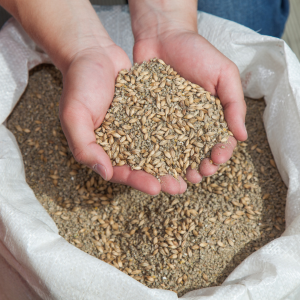
Written by: Louise Calderwood and Paul Davis, Ph.D. | December 6, 2023

In 2004 Facebook, Gmail and Firefox were launched and our use of electrons for social, academic and business purposes changed forever. The horizon was wide open for imagination to influence innovations and as a society we have never looked back. That same year, animal food manufacturers started their quest to modernize the Food and Drug Administration’s Center for Veterinary Medicine (CVM) regulatory oversight of animal food additives. In 2004, products were being developed that would improve animal productivity and wellness and reduce pathogens in human foods derived from animals. But there was no regulatory equivalent to the electronic highway to bring these products to the marketplace, farmers where stuck with the governing equivalent of floppy discs as CVM policy blocked the delivery of these exciting products into the hands of U.S. animal owners. Farmers and ranchers in other countries had the regulatory tools to use these scientific advances for the betterment of human health, animal health and the environment while U.S. farmers chugged along hampered by archaic federal policies.
But now, two decades later, we are on the cusp of regulatory changes through the Innovative Feed Enhancement and Economic Development (Innovative FEED) Act to finally bring these new animal food additives into their rightful regulatory pathway in the U.S. Many of these animal food additives can improve the health and productivity of animals through their impact on the microbiome, similar to how word choice algorithms speed our cell phone typing.
Currently, we have the knowledge, understanding and confidence to put products on the market that will help animal agriculture to be more productive, healthier and more sustainable. These products are not drugs, yet given the current regulatory environment, each would have to be evaluated and approved as such. The current path to approval is often so time consuming, onerous and expensive that animal food firms choose just to shelve the ideas in the U.S. market or to label them for a less impactful use, thus depriving animal agriculture of a cadre of beneficial tools.
Feed ingredients, which act at the gut level, can reduce excreted nutrients via improved utilization, enhance gut health and reduce pathogen load in the animal. However, despite these beneficial outcomes these feed ingredients are not reaching the U.S. market. Healthier animals through the competitive exclusion of harmful microorganisms in the digestive tract? Yes. Please. Feed ingredients that will help reduce excreted nutrients? Animal agriculture needs them, and ingredient suppliers need to be able to make claims openly and legally with regard to their benefits. Anything less than this and we are shortchanging our animals, our fellow man and mother nature.
So how does the Innovative FEED Act open the door for these new developments? Through the creation of a new class of products within the Federal Food Drug and Cosmetic Act, termed Zootechnical Animal Food Substances (ZAFS). Designed to create an animal food regulatory pathway for non-nutritive products which act solely within the microbiome of the animal’s gut, ZAFS are proposed to address animal wellness and productivity, reduce pathogens of human food safety and reduce the excretion of by-products of animal digestion such as ammonia and phosphorus. They will be required to follow the rigorous Food Additive Petition regulatory review to gain market access. Development of the ZAFS class of food additives provides an “on-ramp” for products to enter the U.S. market with accurate labeling to appropriately explain their value to animals, and the environment.
The future of animal food additives is as exciting as the future of computer supported learning and artificial intelligence. Just as AI enables an unprecedented ability to analyze enormous data sets and augment human intelligence, our understanding of the microbiome is primed to transform nutrition for the benefit of animal and human health, productivity and the environment. It is amazing to consider what the next 20 years will bring if we have the regulatory pathway to unleash a new golden age of scientific discovery.
Comments See our policy on comments